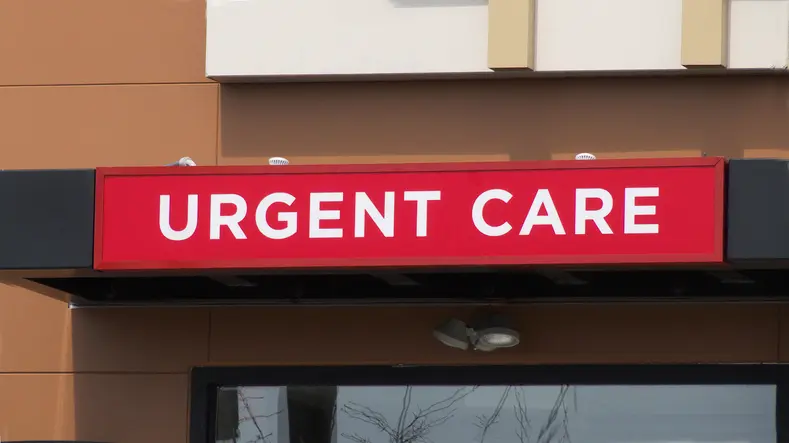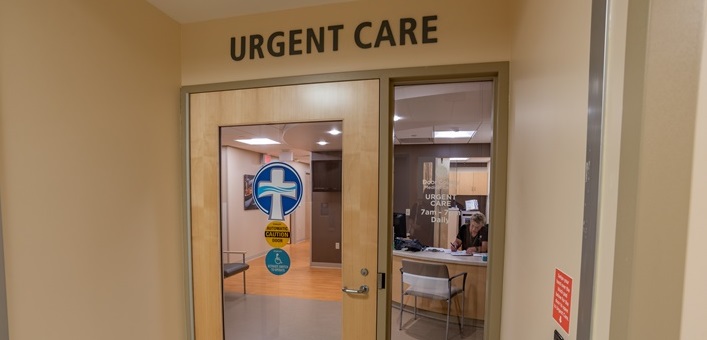What to Anticipate Throughout Your First Check Out to Urgent Care
What to Anticipate Throughout Your First Check Out to Urgent Care
Blog Article
Comprehending the Significance of Urgent Treatment Providers for Non-Life-Threatening Medical Issues
The relevance of urgent treatment services for non-life-threatening clinical concerns can not be overemphasized, specifically in today's health care landscape. These facilities use a necessary alternative for patients seeking prompt focus for problems that call for instant care however do not require a see to the emergency situation space. By comprehending the benefits of urgent care, such as minimized wait times and cost efficiency, one can much better value their function in individual health and wellness monitoring. Yet, the subtleties of exactly how to navigate these services effectively remain to be discovered, questioning regarding their ideal usage.
What Is Urgent Treatment?
Immediate treatment refers to a category of clinical services made to resolve non-life-threatening conditions that call for instant interest but do not call for a see to the emergency situation space. These centers offer a bridge in between primary care and emergency situation services, using accessible medical care options for individuals experiencing intense medical problems, such as small fractures, strains, infections, or severe health problems that arise all of a sudden.

The scope of services given by urgent care facilities can vary however normally includes therapy for common disorders like colds, flu, and allergies, along with minor injuries (urgent care). In addition, many immediate care centers use preventative services, such as inoculations and physical examinations, to deal with more comprehensive health and wellness needs. By supplying a convenient alternative for urgent clinical issues, these facilities play a crucial role in the health care continuum, making certain that clients receive proper care when they need it most
Benefits of Urgent Treatment Services
Several people discover that utilizing immediate treatment services gives considerable benefits over conventional emergency situation room visits or waiting on a primary care consultation. One primary advantage is the lowered wait times. Immediate care centers typically have shorter delay periods, permitting clients to obtain timely medical focus when they need it most. This expedited treatment is particularly helpful for non-life-threatening problems that call for prompt treatment.
Another benefit is the prolonged hours of operation. Many urgent treatment centers are open nights and weekend breaks, fitting people who may not have the ability to see their medical care medical professional throughout regular workplace hours. This flexibility makes it much easier for clients to access care at their benefit.
Furthermore, immediate treatment solutions often offer an affordable option to emergency rooms. Clients often face lower co-pays and total expenditures when looking for therapy for small conditions at immediate treatment facilities as opposed to health center emergency departments.
Lastly, urgent treatment facilities are furnished to take care of a range of non-life-threatening problems, offering a broad variety of services under one roof. This extensive technique not just simplifies the treatment process but also enhances client contentment by delivering punctual and reliable treatment.
Usual Problems Dealt With
What kinds of non-life-threatening conditions can clients anticipate to obtain treatment for at urgent care centers? Urgent care facilities are outfitted to handle a vast range of common clinical problems that need punctual focus but do not posture an immediate threat to life. These centers commonly treat problems such as minor fractures, sprains, and strains, giving crucial treatment for injuries that take place during daily tasks or sports.
Furthermore, people regularly seek therapy for respiratory infections, including colds, flu, and respiratory disease, where prompt intervention can alleviate symptoms and avoid difficulties. Skin conditions such as rashes, insect bites, and small burns are additionally commonly dealt with, as timely care check my blog can alleviate pain and lower the risk of infection.

Contrasting Urgent Care and Emergency Situation Areas

One significant difference waits times; immediate care facilities generally have shorter delay times contrasted to emergency spaces, which can be crowded with more critical cases. This performance enables individuals to get timely treatment for their disorders.
From an economic viewpoint, urgent treatment sees have a tendency to be less costly than emergency space sees. Insurance coverage copays and out-of-pocket expenses are commonly lower at immediate care centers, making them a more affordable choice for non-emergency scenarios.
How to Pick an Urgent Care Facility
Picking the best immediate care center can considerably boost the top quality of care obtained during a non-life-threatening clinical concern. When selecting an immediate care center, several crucial factors should be thought about.
First, examine the center's accreditation and licensing. Some urgent care centers specialize in details locations, while others give extensive treatment for numerous clinical concerns.
In addition, consider the area and hours of operation. A conveniently located facility with prolonged hours can be crucial for timely care. It's likewise suggested to examine the center's delay times and patient reviews, which can offer understandings into the general individual experience.
Verdict
Finally, urgent treatment services play an important role in dealing with non-life-threatening medical problems effectively. By providing prompt focus for numerous problems, these facilities enhance patient access to prompt treatment while lowering the stress on emergency situation spaces. The benefits of urgent care, including extended hours and lower prices, make them a desirable option for individuals seeking timely Website treatment. Inevitably, recognizing the importance of urgent treatment centers adds to improved medical care monitoring and individual contentment.
 By using a convenient choice for urgent clinical concerns, these facilities play an important duty in the health care continuum, making certain that individuals obtain suitable treatment when they need it most.
By using a convenient choice for urgent clinical concerns, these facilities play an important duty in the health care continuum, making certain that individuals obtain suitable treatment when they need it most.Several individuals locate that utilizing urgent treatment services gives significant benefits over traditional emergency situation area check outs or waiting for a primary care consultation. Numerous immediate care facilities are open nights and weekends, suiting individuals who might not be able to see their main treatment doctor throughout routine workplace hours. Urgent treatment centers are developed to address non-life-threatening problems, such as small fractures, infections, and illnesses, using a practical option to emergency areas for those in visit this page need of prompt care. Some immediate care facilities specialize in particular locations, while others give thorough care for different clinical issues.
Report this page